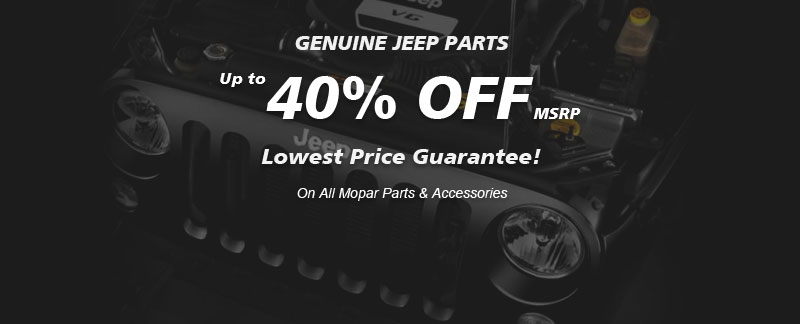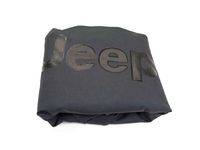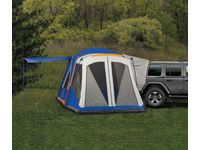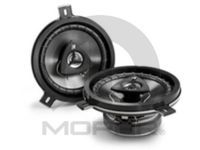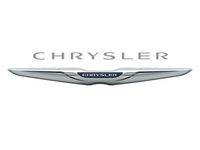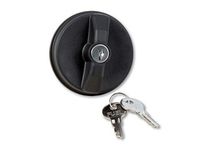- Live Chat
- 1-888-511-3595

Why choose MoparPartsGiant
- Fast Delivery
Your Jeep Liberty deserves only Jeep Liberty genuine parts from MoparPartsGiant.com. There's zero risk involved when buying from us because all our Jeep Liberty auto parts are expedited directly from authorized dealers and backed by the manufacturer's warranty. For years, we've been the #1 Jeep Liberty online parts store. Interested in faster shipping? We offer expedited shipping on corresponding orders!
- Dedicated Service
Our outstanding customer service team is here to help you by email, live chat, or phone call with any inquiries regarding your purchase. Dedicated representatives are standing by to assist you with your shopping needs. With a complete Jeep Liberty parts catalog and a full selection of inventory, your parts are ready to be expedited anywhere in the nation without delays.
- Unbeatable Prices
For any genuine Jeep Liberty parts you need for standard maintenance or repair, we carry them. With our unbelievably low prices on Jeep Liberty parts, you won't go anywhere else for Jeep Liberty parts. We are your one-stop shop for Jeep Liberty parts without breaking the bank!
Popular Genuine Jeep Liberty Parts
- Engine Parts View More >
- Electrical Parts View More >
- Fuel Parts View More >
- Body - Sheet Metal Except Doors Parts View More >
- Cooling Parts View More >
- Steering Parts View More >
- Interior Trim Parts View More >
- Brakes Parts View More >
- Transmission Parts View More >
- Suspension & Drive Parts View More >
- Exhaust Parts View More >
- Doors, Door Mirrors And Related Parts View More >
Shop Genuine Jeep Liberty Parts with MoparPartsGiant.com
The Jeep Liberty, manufactured by Jeep from 2002 to 2012, was a four-door unibody compact SUV that came in two generations: the KJ (2002-2007) and the KK (2008-2012). In some markets outside North America, it is recognized as a generation of the Cherokee. Priced between the Wrangler and Grand Cherokee, the Liberty was the smallest of the three. Most of the vehicles were assembled in the United States, Egypt, and Venezuela. The first generation aimed to replace the Cherokee and debuted with rack and pinion steering and two PowerTech engines. This generation marked the first application of independent front suspension since the 1963-1965 Jeep Wagoneer. Three trims were offered: Limited, Renegade, and the base Sport, available in 2 or 4-wheel drive. The 2005 facelift saw a flatter hood and a taller grille. The second-generation Liberty, sold alongside the Dodge Nitro, was completely redesigned. The only engine available in 2008 was the iron-block, aluminum-head V6, with transmission options of a six-speed manual or a four-speed automatic. Standard features included electronic stability control with roll mitigation, traction control, brake assist, anti-lock brakes, and enhanced airbags. The model's best-selling year was 2002, with 171,212 units sold.
The Jeep Liberty, like all vehicles, is subject to wear and tear over time, leading to common issues such as engine failure and premature window regulator breakdown. Engine failure manifests as frequent illumination of the Check Engine Light, deteriorating gas mileage, and rough running, which may worsen during idling, potentially leading to misfires. These issues might be linked to a damaged synchronizer ring, a faulty oxygen sensor, or a worn-out piston ring set. Moreover, electrically powered components like the window regulator and power window switch, designed to automate window adjustments, can fail prematurely. If such issues arise, checking the condition of the power window switch and the window regulator is recommended. Preventive measures are crucial to prolong the lifespan of the Jeep Liberty, necessitating regular attention to easily overlooked yet vulnerable parts like the antenna or antenna mast for maintaining a satisfactory infotainment environment, and the drive belt for ensuring safety.
For those Jeep owners who aspire to maintain their vehicles in optimal shape, opting for OEM parts is a wise choice. Precisely engineered, these components adhere to stringent factory guidelines and are produced in state-of-the-art facilities using cutting-edge technologies. Moreover, they are subjected to thorough testing to certify their resilience and safety, thereby making them a dependable option for Jeep owners. Are you in search of superior quality and reasonably priced OEM Jeep Liberty parts, like Air Conditioners & Heater, Wiper & Lock Cylinder And Keys? You've landed at the perfect online store. We provide all parts at the most competitive prices in the market, even outdoing inexpensive aftermarket auto parts. Furthermore, we guarantee that you'll receive genuine Jeep Liberty parts covered by the manufacturer's warranty, delivered at the fastest possible speed. Our professional customer service team is always on hand to assist with any issues during your shopping experience. Enjoy your shopping journey with us!
Jeep Liberty Parts Questions & Answers
- Q: How to check the Fuel Pump and fuel pressure on Jeep Liberty?A: If you suspect insufficient fuel delivery, Inspect fuel lines for leaks. Have assistant turn ignition switch to ON and listen for fuel pump sound. If operating, proceed to pressure check. If not, check power at fuel pump connector. Check fuel pump circuit, fuses, relay, wiring, and ground circuit. If power and ground good but fuel pump still not operating, replace fuel pump. Relieve fuel pressure, attach fuel pressure gauge, start engine, and check pressure. If not within specs, check for restriction if pressure lower than specified. If higher, replace fuel pressure regulator.
- Q: How to Remove the Air Filter Element and Air Filter Housing on Jeep Liberty?A: To remove the air filter element and air filter box cover, first, loosen the hose clamps and remove the air duct. Remove the resonator box from the throttle body. Then, remove the crankcase vent hose. Pull the box up to dislodge the locating posts from their grommets. To reinstall, simply reverse the removal process.
- Q: How to Check and Replace the Thermostat on Jeep Liberty?A: Before assuming the thermostat is to blame for a cooling system problem, check the coolant level, drive belt tension, and temperature gauge operation. For 4.0L engines, disconnect the cable from the negative battery terminal and drain the cooling system. Remove the air filter housing and upper intake manifold, then remove the thermostat housing bolts and housing from the lower intake manifold.
